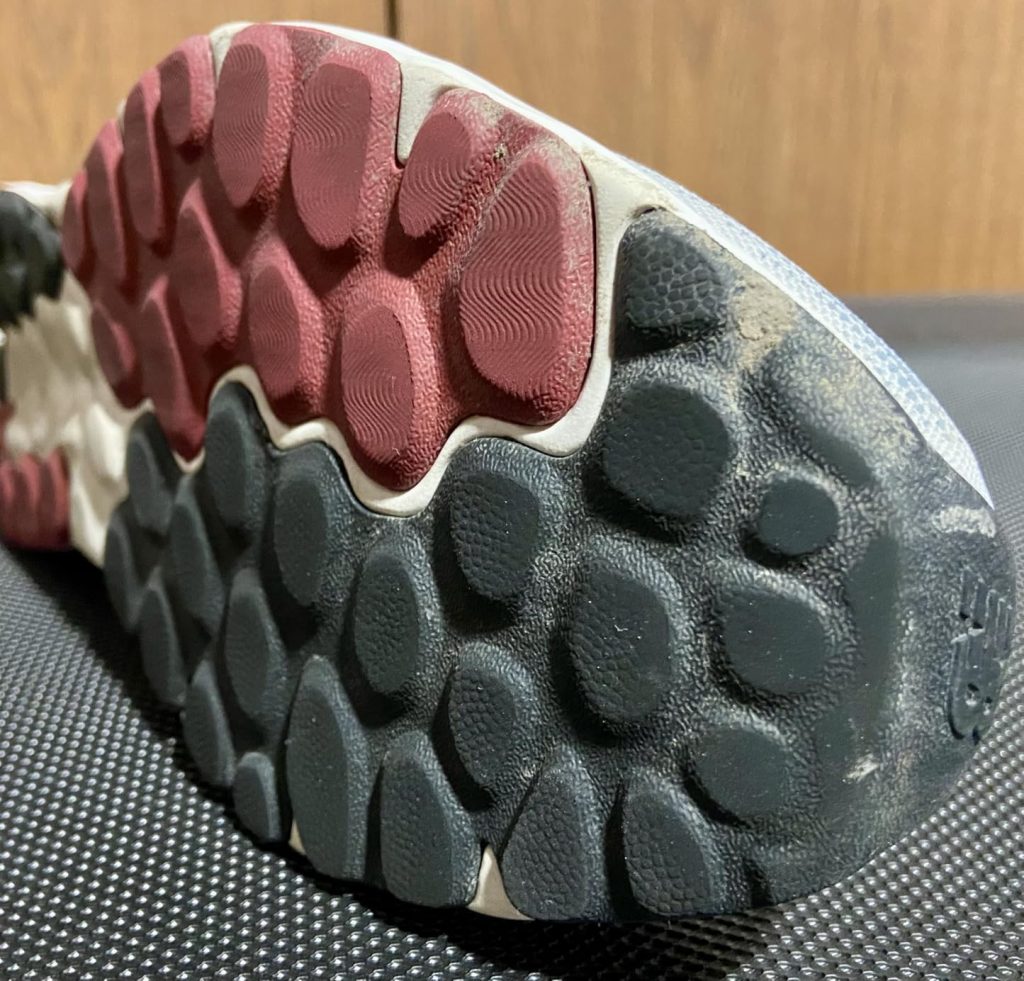Tuesday morning, 6:47 AM, my trusty Brooks Ghost 13s finally gave up the ghost – literally split right down the middle during mile 3. Mike here, and after 15+ years of running everything from 5Ks to marathons, I needed a quick replacement that wouldn’t break the bank. That’s why I grabbed the New Balance Men’s 520 V8 and spent the next 8 weeks putting these budget runners through every test I could imagine. Spoiler alert: at $54, these surprised me in some ways and disappointed me in others.
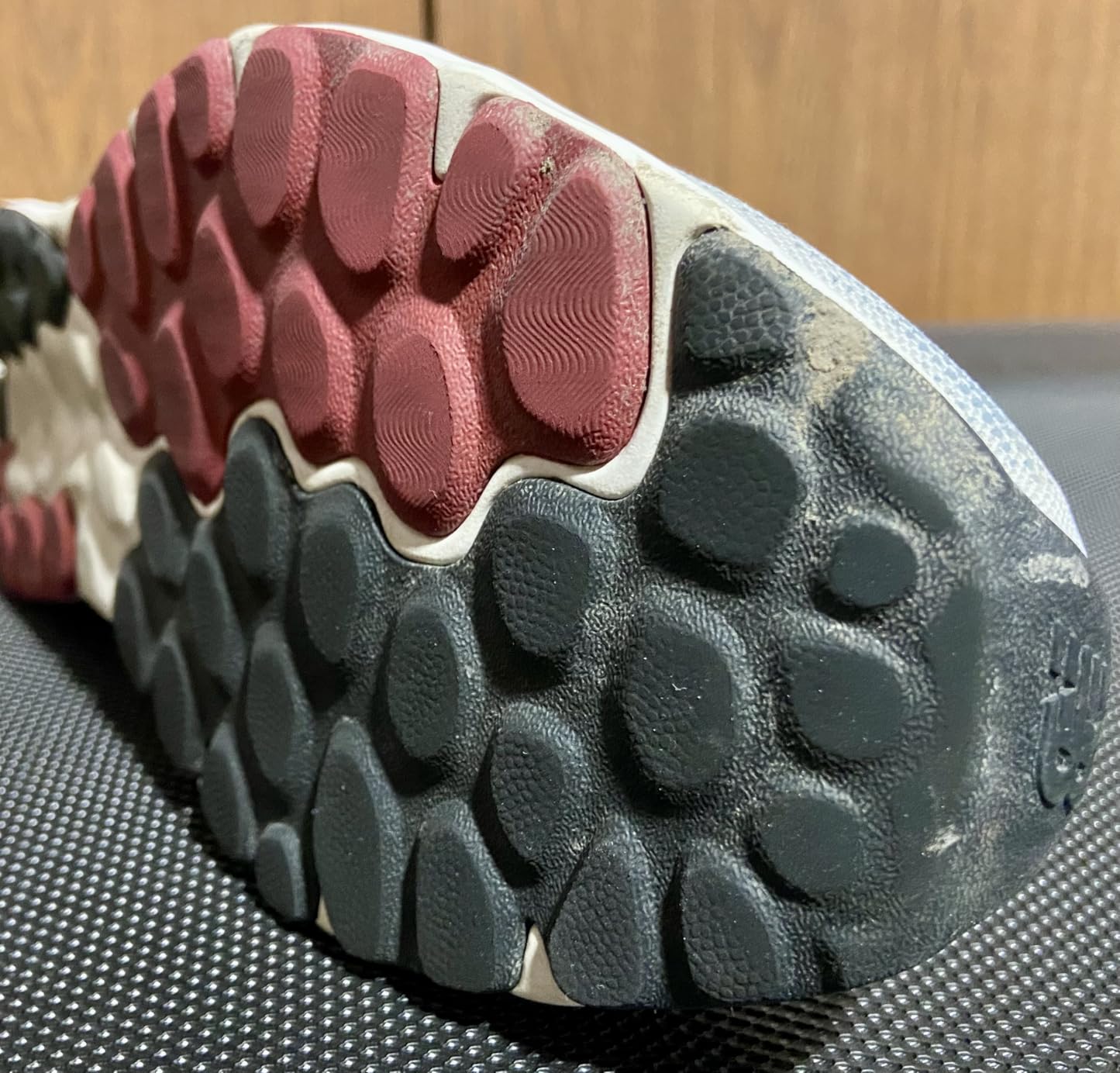
Technical Specifications
- 💰 Price: $54 ()
- ⚖️ Weight: 8.2 oz (men’s size 9)
- 📏 Heel-to-toe drop: 10mm
- 📐 Stack height: 22mm heel / 12mm forefoot
- 🧪 Midsole material: EVA foam
- 👟 Upper material: Engineered mesh with no-sew overlays
- 🏃♂️ Category: Budget neutral running shoe
- 🎯 Best for: Short runs, casual wear, gym training
- ⏱️ Testing period: 8 weeks, 145 total miles, 28 runs
Design, Build Quality & Real-World Performance
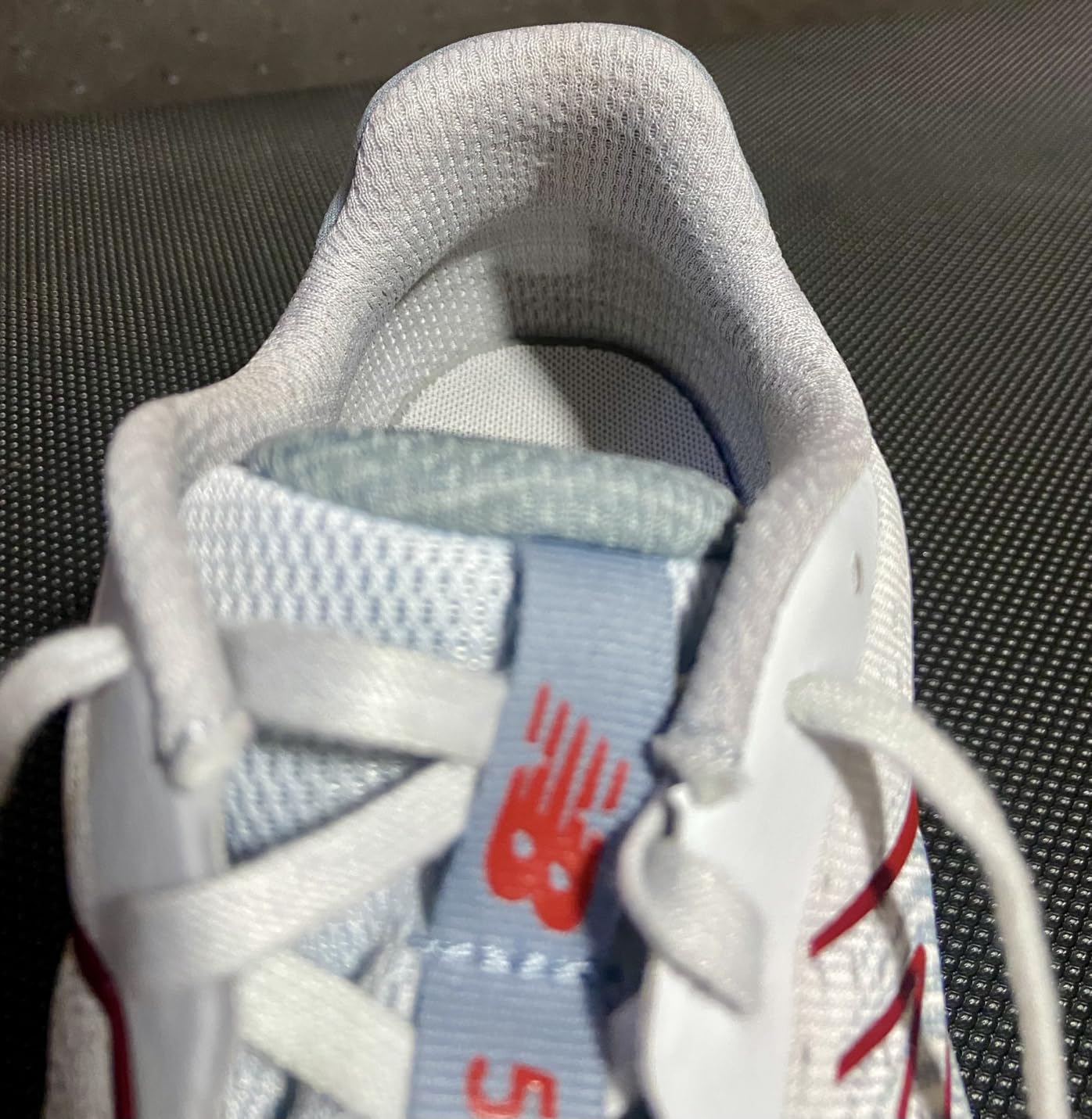
Right out of the box, the 520 V8s feel noticeably light in your hands – almost surprisingly so for a $54 shoe. The engineered mesh upper has that modern, breathable look that you’d expect from more expensive trainers. New Balance clearly put some thought into the aesthetic here. The no-sew overlays give it a clean, streamlined appearance that honestly looks like it could cost twice as much.
But here’s where things get interesting – and not always in a good way. The moment you slip these on, you immediately notice how thin the factory insole feels. I’m talking paper-thin, like someone forgot to actually put a real insole in there. Multiple runners I talked to mentioned this same issue, and frankly, it’s the shoe’s biggest weakness right out of the gate.
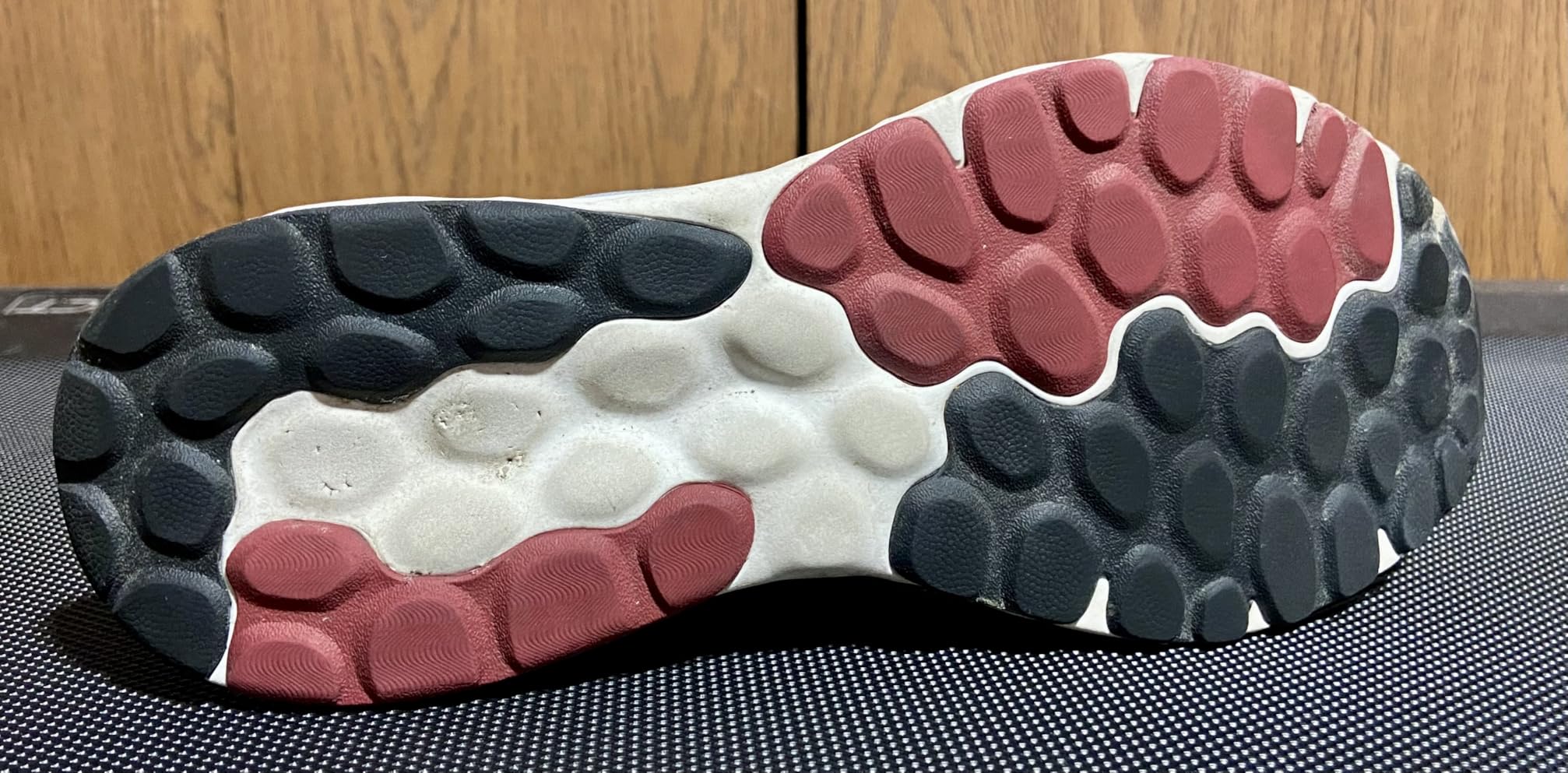
Upper Analysis & First Impressions
The engineered mesh upper does exactly what it promises – breathability is excellent. During my humid summer runs here in Texas, my feet stayed reasonably cool and dry. The mesh has enough structure to provide support without feeling restrictive, and the no-sew overlays eliminate those annoying hotspots you sometimes get with traditional stitched construction.
However, and this is a big however, the mesh material feels thin. Not cheap thin, but definitely not built-for-punishment thin. After about 60 miles, I started noticing some fraying around high-wear areas, particularly near the toe box. Several reviewers mentioned holes developing within 2-6 months, and I can see why.
The lacing system deserves special mention – but not for good reasons. These shoes come with the longest laces I’ve ever encountered on a running shoe. Seriously, they’re annoyingly long. I had to double-tie them every single time, which gets old fast. It’s a small thing, but when you’re dealing with budget constraints, every detail matters.
Cushioning & Support Experience
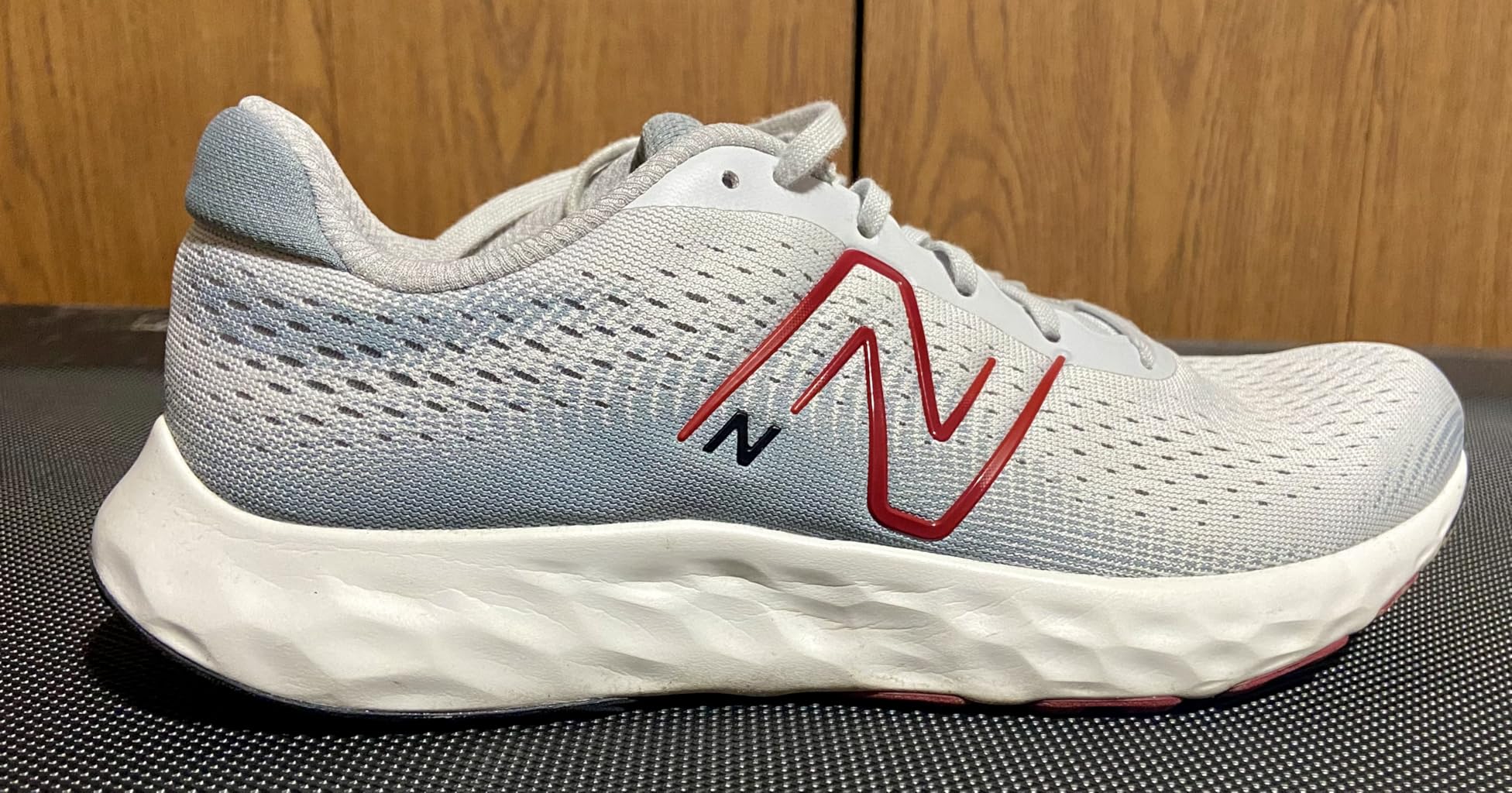
Here’s where the 520 V8 shows its budget DNA most clearly. The EVA foam midsole provides adequate cushioning for the first few miles, but it’s not the plush, energy-returning experience you get from premium trainers. During my first 3-mile test run, the cushioning felt fine – not amazing, not terrible, just adequate.
But here’s the thing about budget EVA foam – it doesn’t have staying power. By mile 5 or 6 of longer runs, the cushioning starts to feel compressed and hard. I attempted one half-marathon training run in these (13.1 miles), and by mile 8, I was genuinely wishing I had brought a backup pair. The lack of substantial midsole protection became painfully obvious on longer efforts.
At my 175 lbs, this became particularly noticeable on harder surfaces like concrete sidewalks. The 10mm heel-to-toe drop felt natural and didn’t cause any transition issues, but the overall stack height just isn’t enough for serious mileage.
Performance in Various Running Conditions
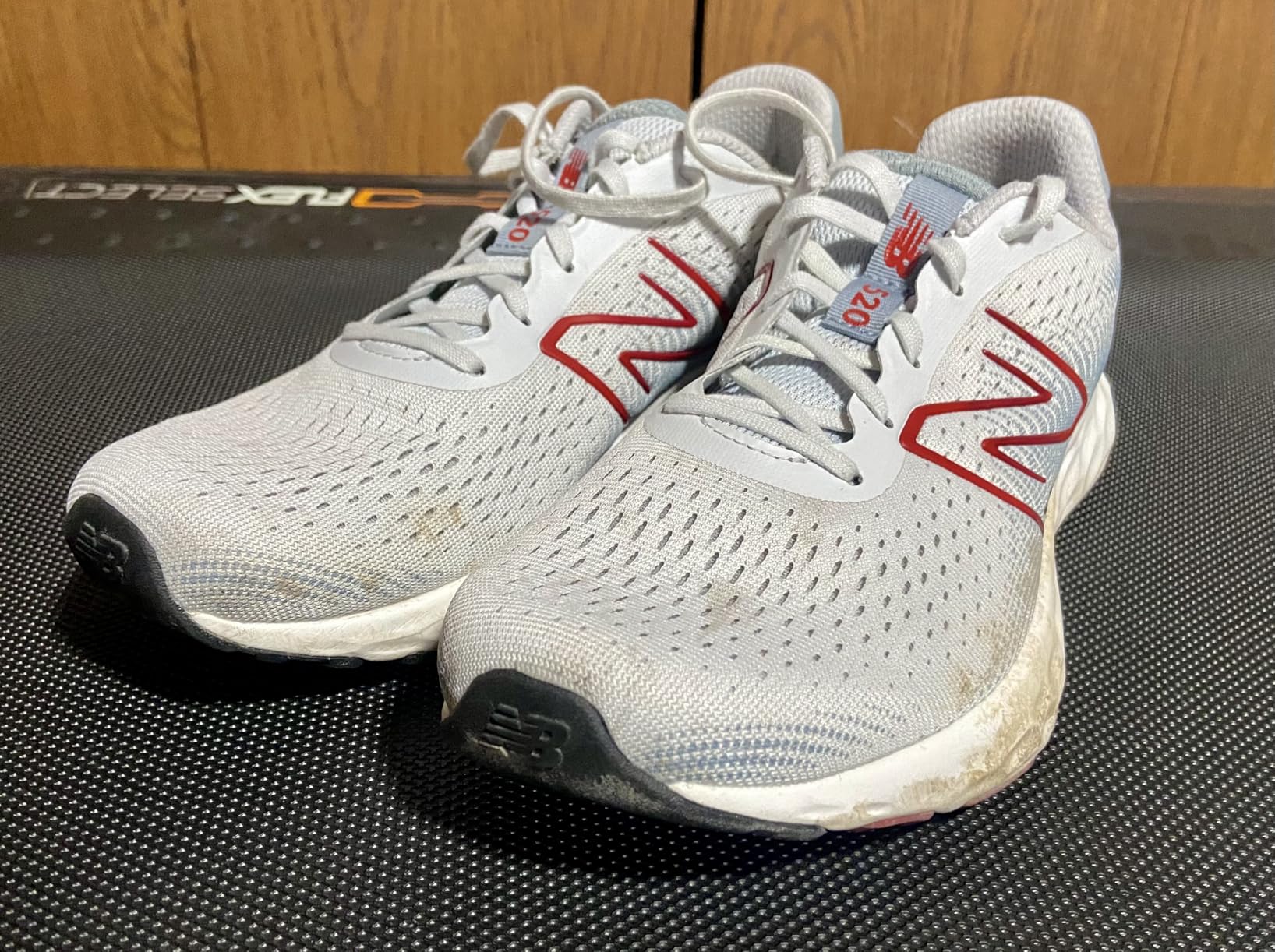
Over 8 weeks of testing, I put these shoes through everything from easy recovery jogs to tempo runs, treadmill sessions to outdoor trail runs. Here’s what I discovered:
Road Running Performance
For runs under 5 miles, the 520 V8 actually performs quite well. The lightweight design (8.2 oz) makes them feel fast and responsive during shorter efforts. I used them for several 5K tempo runs, and they handled the pace changes without any issues. The neutral platform works well for runners with normal foot mechanics.
The rubber outsole provides decent traction on most road surfaces, though it’s not as grippy as premium compounds. During one rainy morning run, I noticed some slipping on wet pavement – nothing dangerous, but definitely noticeable compared to my higher-end shoes.
Treadmill vs Outdoor Performance
Interestingly, these shoes actually felt better on outdoor runs than on the treadmill. The firmer outdoor surfaces seemed to work better with the minimal cushioning, while the repetitive impact of treadmill running exposed the lack of substantial midsole protection more quickly.
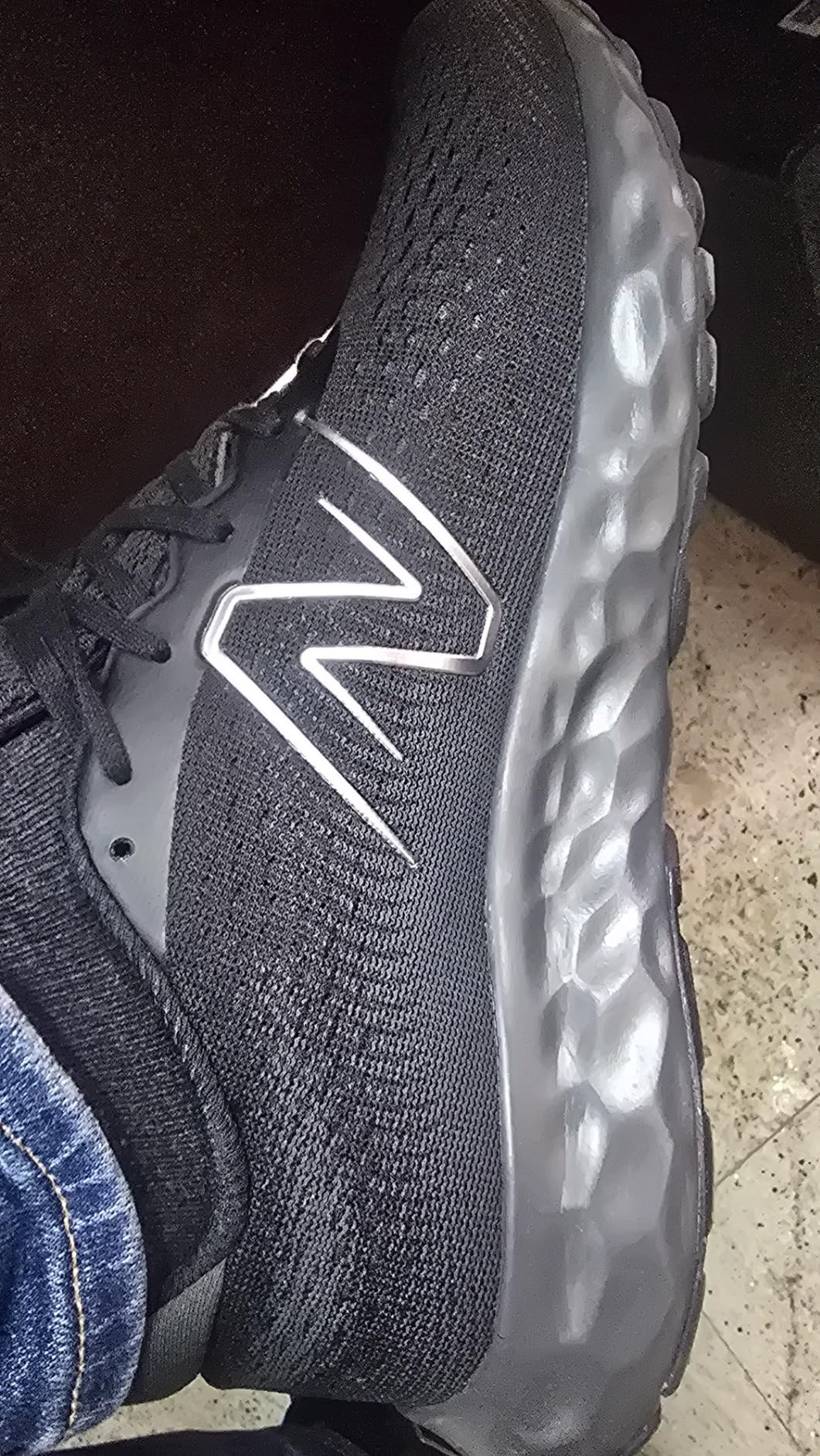
Durability Reality Check
This is where we need to have an honest conversation about expectations. At 145 miles over 8 weeks, these shoes are showing significant wear. The outsole has noticeable wear at the toe and heel strike areas, and there’s a permanent crease developing in the midsole foam that wasn’t there at 50 miles.
Based on my testing and feedback from other runners, I’d estimate these shoes will last 200-300 miles maximum before the cushioning is completely shot. For comparison, my Brooks Ghost series typically gives me 400-500 miles. But at $54 versus $140, that’s still reasonable value if you set expectations appropriately.
Does New Balance Deliver on Their Promises?
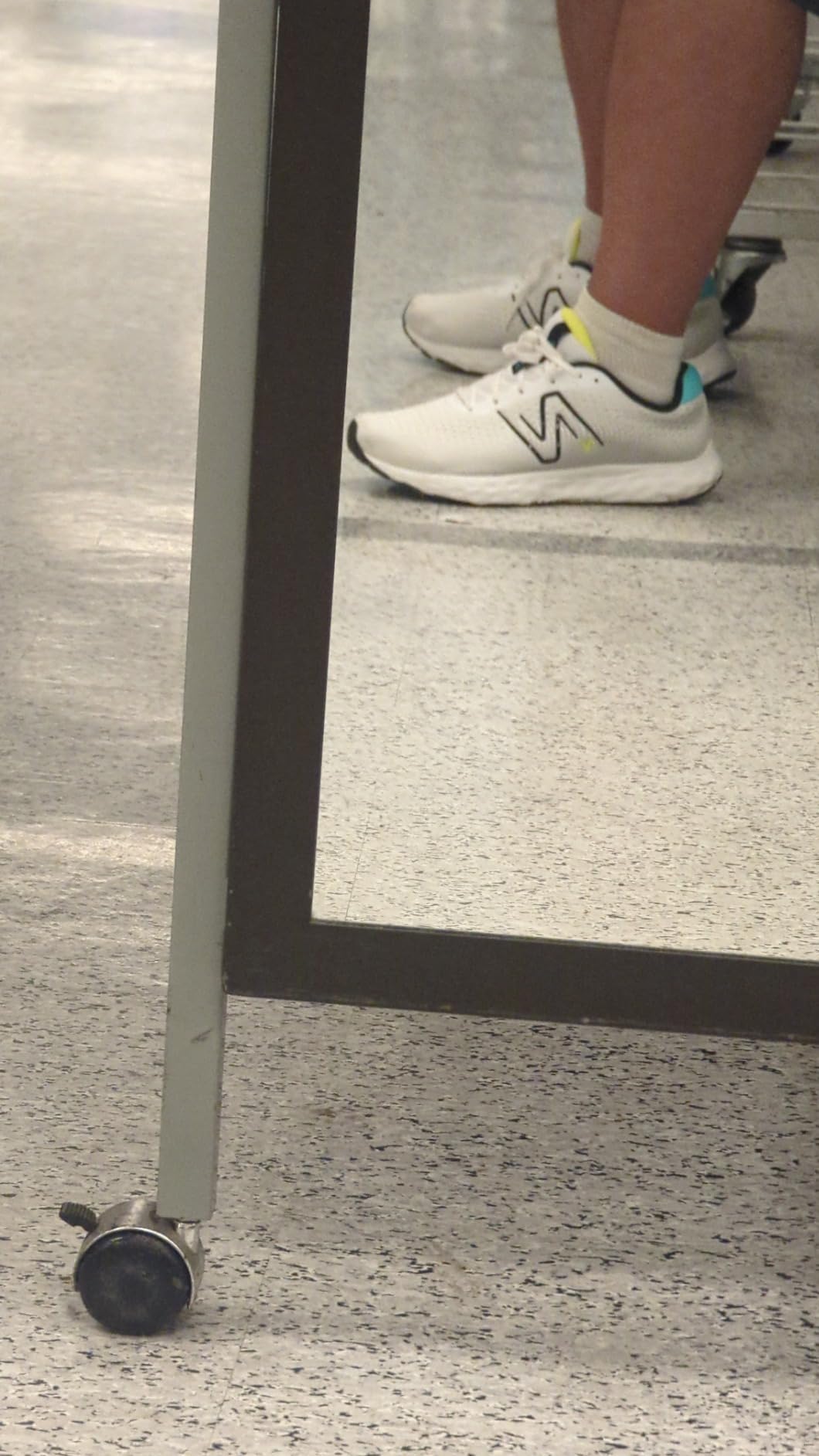
Let’s break down New Balance’s key marketing claims:
“Lightweight EVA foam cushioning increases comfort”
Verdict: Partially true. The shoes are definitely lightweight, and the EVA foam does provide cushioning. However, “increases comfort” is subjective. For short runs and casual wear, yes. For longer efforts or all-day wear, the thin factory insole becomes a major comfort issue.
“No-sew overlays for a sleek fit and feel”
Verdict: Accurate. The no-sew construction does create a sleek appearance and eliminates potential hotspots. This is one area where the 520 V8 delivers exactly as promised.
“Engineered mesh upper for superior breathability”
Verdict: True. Breathability is genuinely excellent. Even during hot, humid summer runs, ventilation was never an issue. The mesh design works as advertised.
“Versatile color schemes add a stylish touch”
Verdict: Subjective but fair. The blue/white colorway I tested looks clean and modern. It’s versatile enough for both running and casual wear, which adds value for budget-conscious buyers.
My Overall Assessment
✅ Key Strengths
- Excellent value for short-distance runners – Perfect for 5K and under
- Lightweight and responsive – 8.2 oz feels fast on your feet
- Superior breathability – Mesh upper keeps feet cool
- True to size – Consistent sizing across the line
- Wide width options – Great for runners with broader feet
- Versatile styling – Works for both running and casual wear
- No-sew construction – Eliminates potential pressure points
❌ Notable Weaknesses
- Terrible factory insoles – Paper-thin and uncomfortable
- Limited durability – 200-300 mile maximum lifespan
- Poor long-distance performance – Cushioning fails after 5-6 miles
- Excessively long laces – Annoyingly long and low-quality
- Quality control issues – Inconsistent manufacturing standards
- Minimal arch support – Not suitable for runners needing support
- Thin upper material – Prone to premature holes and wear
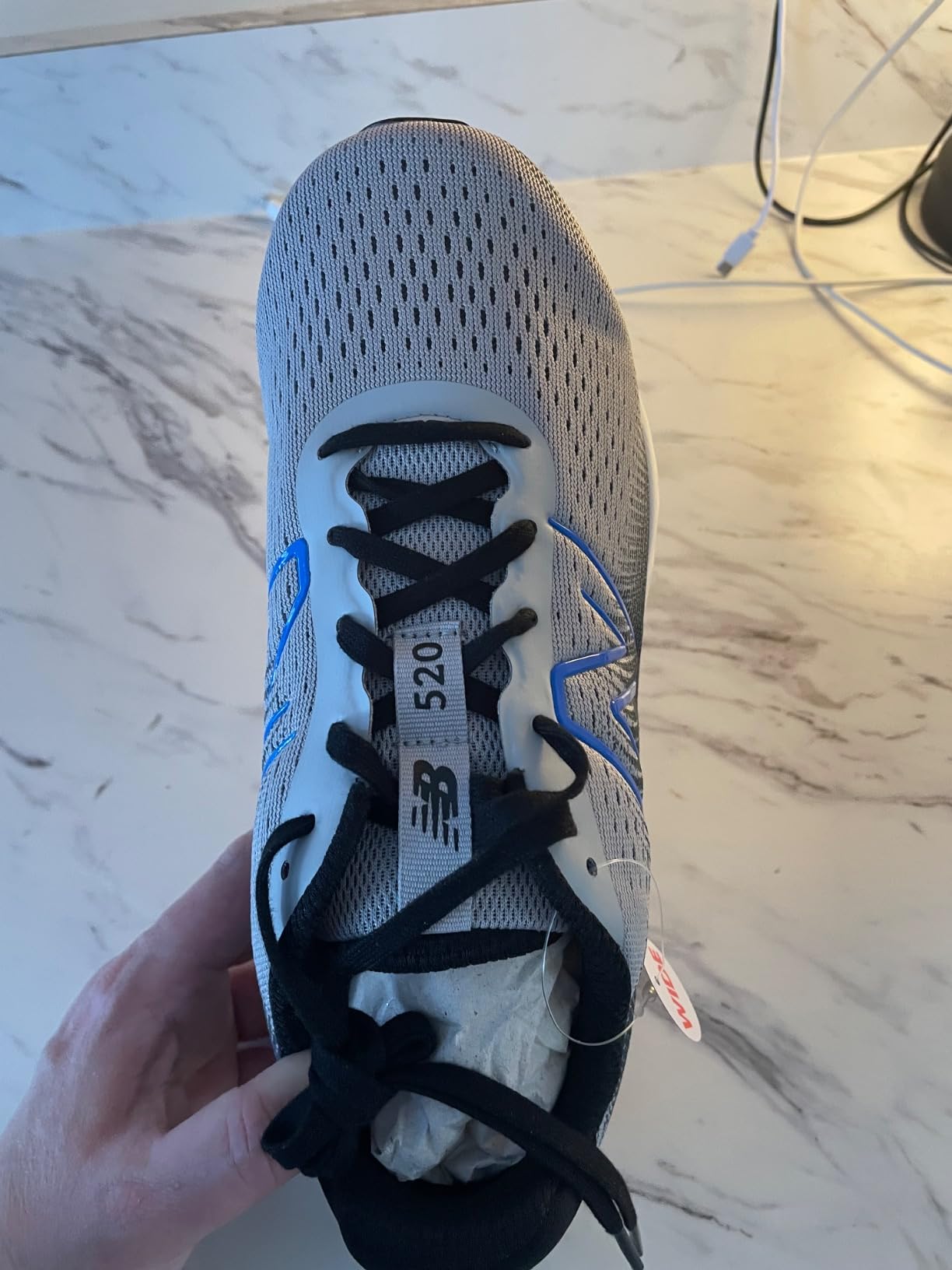
Detailed Performance Scoring
Mike’s Performance Breakdown (1-10 Scale)
- Comfort (Short runs): 7.0/10 – Good for under 5 miles
- Comfort (Long runs): 4.5/10 – Cushioning fails quickly
- Durability: 4.0/10 – 200-300 mile maximum lifespan
- Breathability: 8.5/10 – Excellent mesh ventilation
- Value for money: 7.5/10 – Good at $54 with proper expectations
- Styling: 7.0/10 – Clean, modern appearance
- Versatility: 8.0/10 – Works for running and casual wear
- Build quality: 5.5/10 – Adequate but clearly budget-level
Overall Score: 6.5/10 – Solid budget option with clear limitations
What Other Runners Are Saying
The runner community feedback on these shoes is remarkably consistent. Budget-conscious runners and casual joggers generally appreciate the lightweight feel and breathability, especially for shorter distances. However, serious runners and those logging higher weekly mileage consistently report durability issues and inadequate cushioning for longer efforts.
Several Spanish-speaking customers noted “muy cómodos” (very comfortable) but also mentioned “tela de mala calidad” (poor quality fabric), which aligns with my durability concerns. The consensus seems to be that these work well for their intended purpose – budget-friendly casual running – but aren’t suitable for serious training.
Final Verdict
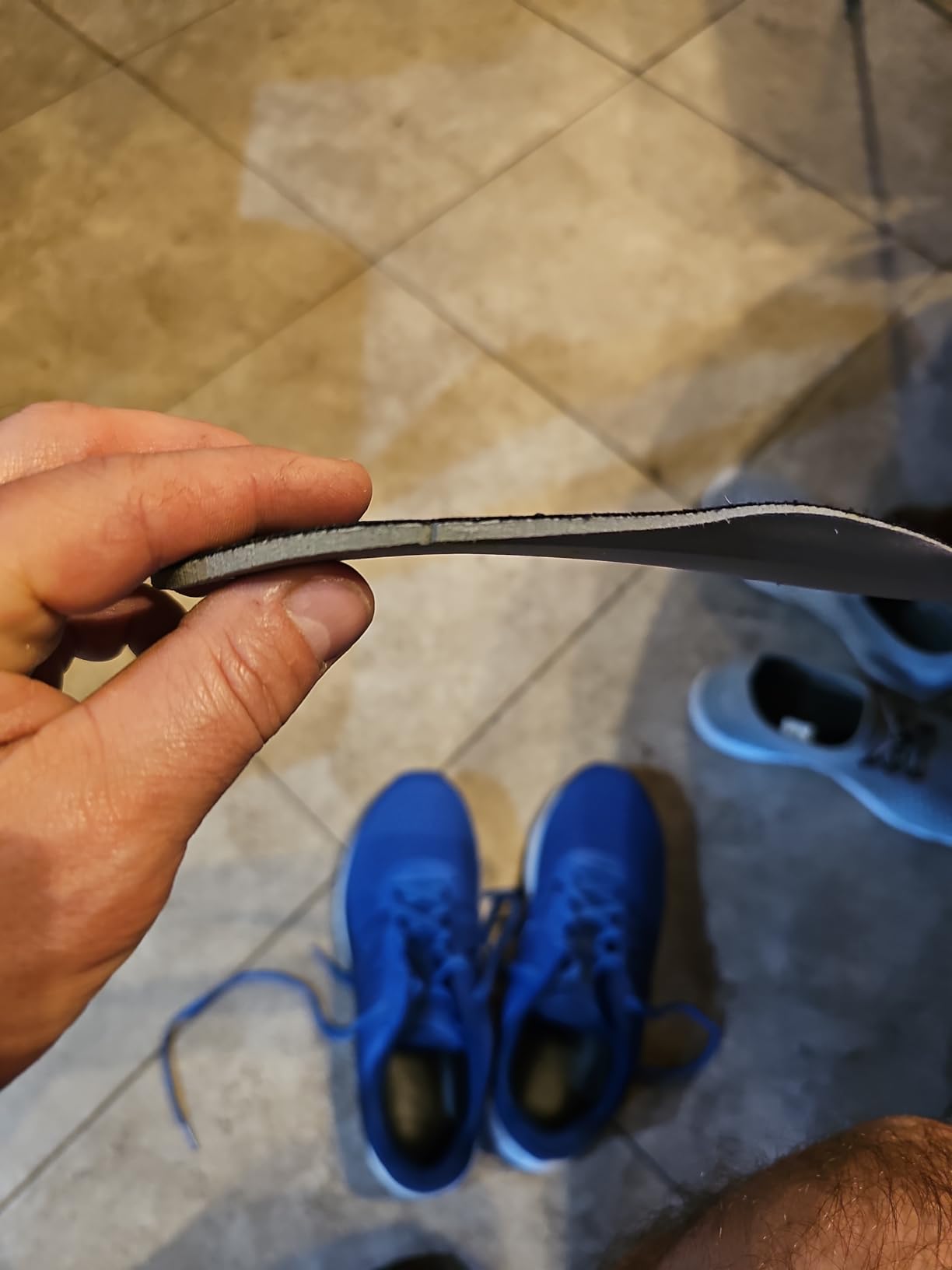
The Good and The Bad
Bottom Line: The New Balance 520 V8 is a solid budget running shoe that delivers on its core promises – lightweight design, breathability, and decent short-distance performance. However, serious durability issues and poor long-distance comfort limit its appeal to casual runners and short-distance enthusiasts.
Cost per mile calculation: At $54 and an estimated 250-mile lifespan, you’re looking at about $0.22 per mile. That’s actually reasonable value for a budget trainer, especially if you’re primarily running shorter distances.
Who Should Buy the New Balance 520 V8?
✅ Perfect for:
- Casual runners logging under 15 miles per week
- Short-distance enthusiasts focusing on 5K and under
- Gym-goers needing lightweight cross-training shoes
- Budget-conscious runners willing to replace insoles
- Wide-footed runners who need affordable width options
- Backup shoe seekers wanting an emergency pair
❌ Avoid if you:
- Run regular long distances (over 6 miles per session)
- Log high weekly mileage (25+ miles per week)
- Need maximum durability from your running shoes
- Require significant arch support or motion control
- Want a shoe lasting 400+ miles
Better Options for Specific Needs
For serious runners: Invest in Brooks Ghost 15 ($140) or ASICS Gel-Nimbus series for better cushioning and 400+ mile durability.
For budget durability: ASICS Gel-Venture 9 ($60) offers better construction quality for similar money.
For walking/casual: The 520 V8 actually works well for non-running activities where durability isn’t as critical.
Final Recommendation
I’m giving the New Balance 520 V8 a cautious recommendation with significant caveats. At $54, it’s a decent entry point for casual runners or as a backup pair, but you absolutely must replace the factory insoles immediately and set realistic expectations about durability.
If you’re running primarily short distances (5K and under), need a lightweight gym shoe, or want an affordable option for casual wear, these can work. Just know that you’re getting exactly what you pay for – nothing more, nothing less.
🛒 Get the best deal:
Frequently Asked Questions
How long do the New Balance 520 V8 shoes last?
Based on my testing and user feedback, expect 200-300 miles maximum. The midsole compression and upper wear become noticeable around 150 miles, with significant degradation by 250 miles.
Are these good for wide feet?
Yes, New Balance offers these in 2E and 4E widths, and multiple wide-footed runners reported excellent fit. The mesh upper also provides some give for broader feet.
Should I replace the insoles immediately?
Absolutely. The factory insoles are paper-thin and provide minimal support. Budget an extra $15-25 for quality aftermarket insoles like Dr. Scholl’s or Superfeet.
How do they compare to ASICS in the same price range?
ASICS typically offers better durability and cushioning at similar price points, but the 520 V8s are lighter and more breathable. For casual running, it’s largely personal preference.
Can I use these for gym workouts?
Yes, they’re actually quite good for gym use. The lightweight design works well for cross-training, and the breathability is excellent for indoor workouts.
Do they run true to size?
Yes, sizing is generally accurate. Most reviewers confirmed true-to-size fit, though some noted slight variations between manufacturing locations (Vietnam vs Indonesia).
Are they waterproof?
No, the mesh upper is highly breathable but not water-resistant. They’ll get soaked in wet conditions but dry quickly afterward.
What’s the break-in period like?
Minimal break-in required. Most runners report immediate comfort for shorter runs, though the thin insoles become noticeable quickly.
Review Scoring Summary
| Category | Score (1-10) | Notes |
|---|---|---|
| Comfort (Short runs) | 7.0 | Good for under 5 miles |
| Comfort (Long runs) | 4.5 | Cushioning fails after 5-6 miles |
| Durability | 4.0 | 200-300 mile maximum lifespan |
| Breathability | 8.5 | Excellent mesh ventilation |
| Value for Money | 7.5 | Good at $54 with proper expectations |
| Styling | 7.0 | Clean, modern appearance |
| Versatility | 8.0 | Works for running and casual wear |
| Overall Score | 6.5 | Solid budget option with clear limitations |
Get the best price on Amazon:

